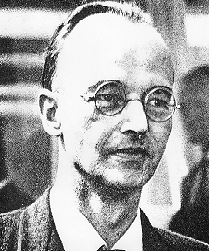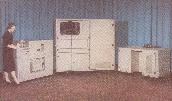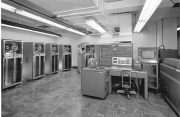

I think it is fair to say that I owe my whole career to my time at Harwell, and specifically to Jack Howlett. I can still remember clearly his interviewing me in his office and explaining to me the LU matrix decomposition; to a 22-year-old Oxford undergraduate this was then a completely novel approach, and I was hooked on numerical analysis for the rest of my life and on joining Jack's Computing Group as soon as I graduated in 1952.

Jack himself had joined Harwell four years earlier, at the invitation of Klaus Fuchs. He saw immediately that the computing service should be developed to serve the whole laboratory rather than just Theoretical Physics Division, and was able to persuade the Director Sir John Cockcroft of this. Computing was then in its infancy. It was all done by hand on mechanical or electro-mechanical calculators using large pads of ruled paper, after plenty of careful analysis beforehand to find out what was really wanted. When I arrived Bart Fossey and Philip Preston were the resident experts. There were few books and one journal - emtac or Mathematical Tables and other Aids to Computation! And virtually no conferences, but we frequently went by chauffeur-driven limousine to seminars and to ask advice at NPL (Fox, Goodwin, Wilkinson,. .) and Cambridge (Hartree, Miller, . .).
Our first contact with computers was the use of punched-card machines to collect the data from Cranshaw's cosmic ray showers. But the really big development came with the use of Monte Carlo methods. Jack organised a very successful summer school at which the key people were John Hammersley, I J Good, and Broadbent from the Coal Board. This led to all sorts of developments, but particularly to our use of Monte Carlo methods for reactor calculations. I remember calculating the critical size of a lump of fissile material on desk calculators; but this was hopeless for real work. So Jack hired Elizabeth and Jim Hailstone; and they got the IBM 602A, which was capable of carrying out all of twelve program steps at each card passage! This phase culminated over a number of years in the BTM 555, which could do 150 steps.

But stored-program computers were the eventual answer. We started by using the night shift on Aldermaston's IBM 704 from about 1956.
Jack used to drive us over in his enormous Humber limousine - not without some interesting incidents, such as my falling out of the back door when in full flight! Then we ordered our own Ferranti Mercury, which was delivered in 1958, and led to many worries for Jack - for instance over the air conditioning which was a major technical problem in those days. We tried to get the 704 to Harwell, when Aldermaston replaced it with the IBM 7090; but after strong support from Cockcroft and Flowers, the new director Schonland ruled it out. So we come to the planning for Atlas which you will hear about in later talks, and Jack leaving Harwell - which I also did at about the same time.

They had been exhilarating, absorbing and fulfilling years at Harwell. Jack was a model group leader, and we were in a cutting-edge Theoretical Physics Division, led successively by Brian Flowers, Mick Lomer and Walter Marshall. They were also relaxed and confident years in a new egalitarian community with few rules. I remember Jack cycling to work on his Claud Butler bike, in bright yellow socks and sandals; and we all picked up from him his joy in good wine, food, art, books - and reading the Manchester Guardian! He had a lasting influence on his colleagues at all levels; he built a powerful group with the recruitment of Alan Curtis, Bob McLatchie, Ian Pull, Mike Powell, Barbara Stokoe, ..., but he was equally good at bringing the best out of secretaries, card punchers, computer operators, and so on.

However, enormous changes were taking place around us: the 1958 Geneva Conference was followed by fission reactors going to Winfrith, fusion research to Culham and accelerators to the Rutherford Laboratory; then Wedgewood-Benn addressed us all in the Cockcroft Hall and said we had to diversify! So this era effectively came to an end as Jack moved on to his next adventure.